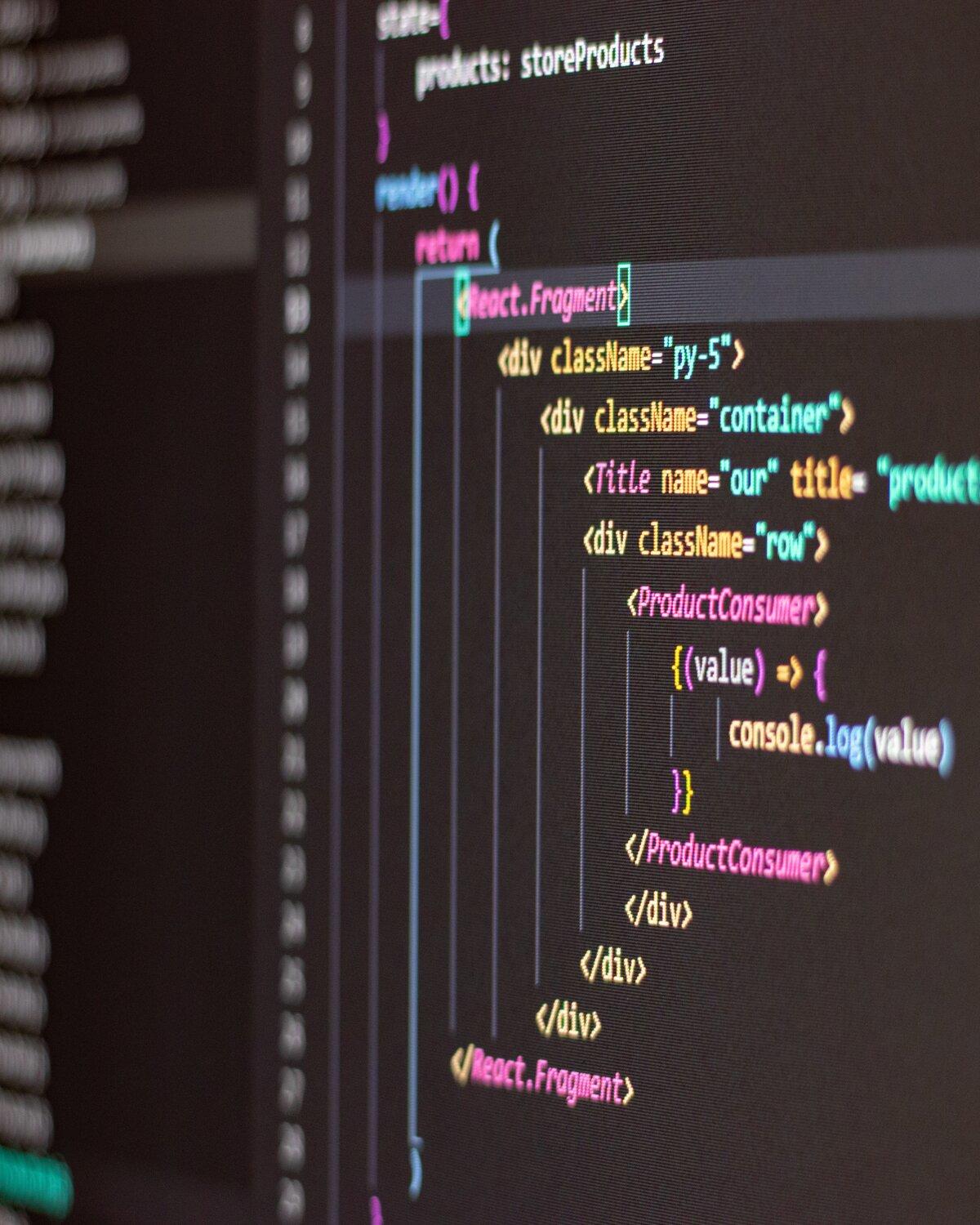Understanding the Role of a Computer Programmer
- Computer programmers do more than just write code; they also develop step-by-step solutions to problems through algorithms.
- In terms of career prospects, you can choose to become a generalist or specialist computer programmer.
- Some of the major roles of computer programmers include maintenance, troubleshooting systems and software, and debugging.
- A good computer programmer recognizes the application of different programming language levels, such as machine-level language, assembly-level language, and high-level language.
The field involving computers and technology is valued worldwide, and one is required to have the proper knowledge to excel in it. Among the top talents in this field are computer programmers.
Every technological interface, including sounds, display, layout, and software functionality in the world of modern-day computing technology, is made possible due to the expertise of computer programmers. In this article, we will dive deep into the landscape of computer programming, exploring the job roles of computer programmers as well as the skills needed to become a successful one.

🌐 Understanding Computer Programming
From your phone display to your computer, to software, applications, and web layout, all of these and more are possible due to computer programming. So what is computer programming?
Computer programming is the detailed process of planning and writing instructions in a language that a computer can understand, in order to create a program that accomplishes a specific task 1. Some of these tasks can be divided into three major categories:
Designing and generating algorithms
- Example:
Writing the steps of a program in plain words to sort a list of words alphabetically
Testing efficiency and accuracy of algorithms
- Example:
Checking if the sorting process is fast and accurate when a huge quantity is involved
Implementing and optimizing in code
- Example:
Turning the algorithm into actual code so the computer can execute the program
In other words, computer programming is a series of problem-solving steps, where you first identify and understand a problem, then design and implement solutions to solve it. And then, coding comes into the picture, where the algorithms are translated into a programming language that the computer can run.
Since humans don't speak code and the computer doesn't speak or understand human languages directly, coding becomes a good avenue for understanding and communication between humans and computers to get the job done correctly. Coding is a part of programming, but programming doesn’t only mean coding.
Coding is using sets of instructions called code to create the language, which generates the program. The programming bridges the barrier between human and computer relationships.
You can use various languages to give programming instructions for computers, and here are some examples:
| Programming Language | Explanation |
|---|---|
| Python | A general programming language used for website creation, software development, data analysis, and automation. |
| Javascript | A dynamic, interactive scripting language mainly for web and game development, adding dynamic features to pages. |
| Java | An object-oriented language widely used in back-end development projects. |
| PHP | Stands for Hypertext Preprocessor; an open-source server-side scripting language mainly for web development. |
| Swift | Developed by Apple to create apps for Apple platforms. |
| Scala | A general-purpose language supporting object orientation and functional programming, less readable than Java. |
| Go | An open-source general-purpose programming language for large software and servers. |
| C# | Multi-purpose, object-oriented language combining C++ and Visual Basic, used for networking and web development. |
| Ruby | A high-level, open-source, multi-paradigm, object-oriented and interpreted language. |
| Elm | A functional programming language that works with JavaScript, converting inputs to outputs without side effects. |
👨💻 What Is a Computer Programmer?
Now that you understand what computer programming is, you may wonder: who sits in front of the computer carrying out these tasks to help us interact better with technology?
A computer programmer is someone who writes instructions that a computer can understand. They develop software and applications to produce the desired results.
As a programmer, you can either be a specialist, focusing on one specific area of programming, or a generalist 2, who writes code for a wide range of software.

The main role of a programmer is to act as a bridge between humans and machines, ensuring they connect efficiently and securely, regardless of the industry which they are involved.
Specialist computer programmer
Generalist computer programmer
Regardless of the path you choose in programming, having proper and comprehensive knowledge is essential - and the quality of your training greatly influences how effective you will be at creating reliable programs. That being said, writing codes is not an easy task; it involves trial and error and requires a highly creative and logical approach.
Don't forget to explore more about career options for coders.

🧠 Computer Programmers' Job Descriptions and Key Roles
As the world continues to adopt technology more and more and advance digitally daily, the job of a computer programmer is getting more and more important by the day.
Asides from the codes written by computer programmers, it's also important to note that they are also involved in a wide variety of other things, which include maintenance, troubleshooting systems and software, and debugging.

Most of the time, programmers work together in a team, collaborating in person or through remote working conditions to review each other's work and combine different areas of expertise, especially when juggling multiple projects within a similar timeline.
Being a good programmer goes beyond mastering technical skills, but also includes soft skills such as adaptability, teamwork, and good communication skills. Discover more of the other roles of computer programmers:
The computer programmer writes code for websites and software, often working with web developers and software developers. A computer programmer can take on the role of web and software developer, especially if the programmer is also skilled in this area.
Protecting programs is very important. Through the field of cyber security, programs are protected against viruses and malicious software that could expose the programs and increase their risk of being compromised.
As technology advances and user interaction increases, it is essential to always upgrade and update existing versions of a program. The purpose of this can range from fixing a bug to optimizing user experience
Different operating systems have different programming languages. A program in a particular operating system needs to be rewritten before it can work in another operating system. Some programmers can write codes that can work on any operating system.
Problems in a website or software usually result from coding errors, and it takes a programmer to fix them.
Find out about the salaries of programmers in Canada.
🔢 🔠 Programming Languages and Levels Explained
Programming has evolved from running simple applications on phones and computers to powering cars, homes, and even entire businesses. However, to gain a deeper understanding, it is helpful to start by understanding different programming languages and their respective levels.
At their core, computers are built from countless tiny switches that can be turned on or off. An “on” state is represented by 1, while an “off” state is represented by 0.
This system of 0s and 1s is called binary, and when arranged in the right sequence, these binary instructions tell a computer exactly what to do.
To make programming easier and more efficient, new language levels have been continuously developed within the field of computer science, using the examples below:
👉 Machine-level language
This is the language that machines understand by default. It is the "foundation programming language" we have to convert to pass instructions to the computer, as it's too difficult for humans to work with directly with all the 0s and 1s.
At this level, machines also use this language to communicate amongst themselves, creating an accessible information network.

👉 Assembly-level language
This is the second type of language, and it's much easier than the machine-level language. It deals with a combination of regular numbers, symbols, and abbreviations to make sets of binaries, which are then converted into 0s and 1s by an assembler program.
The computer then recognizes these 0s and 1s as instructions and commands. This type of language is easier to compute, understand, organize, and access.
Some common examples of symbols used in assembly language include:
ADD
- Instructing the computer to add two values
- ADD C, D means add the value in D to C and store the result in C.
SUB
- Instructing the computer to subtract one value from another
- SUB C, D means subtract the value in D from C and store the result in C.
MOV
- Instructing the computer to transfer data from one place to another
- MOV B, 6 means store the number 6 in location B
👉 High-level language
This is the third and could be considered the easiest. The computer receives instructions and interactions as English-like statements and symbols.
This is achieved regardless of the kind of computer being used. You can also include details in the instructions passed to help you better remember the instructions' functions. This aids easy programming, easy reading, and easy modifications. These are what modern-day programmers use, such as Java, C++, and Python.
🖥️ Can Anyone Learn Computer Programming?
Some see computer programming as an art, and it's also seen as a science by most people. Scientifically, computer programming requires the proper coding knowledge, which is applied knowledge.
Most good programmers do programming not because they expect to get paid or adulation from the public, but because it is fun to program
Linus Torvalds
Artistically, computer programming requires creative insights to create a solution or solve a problem. Therefore, it is safe to say that computer programming can be seen as both an art and a science. The next question follows: Can you and I master programming as absolute beginners?

Here at Superprof, anyone and everyone can learn programming at their own pace. With the vast array of tutors in our arsenal and tons of unique courses, you're sure to get the A-Z of computer programming.
In just a few simple steps, you can find an experienced computer programming tutor in your city.
All you need to do is head to the Superprof Canada homepage, indicate your desired subject (computer programming), and your current city (for example, Toronto). From there, the system will direct you to a wide selection of computer programming tutors. As soon as you have reviewed the tutor's essential information, you can proceed to book your first lesson via the messaging feature.
Superprof delivers the best knowledge in a detailed and gradual process. Whether you're a beginner or want to improve your understanding of computer programming, feel free and get comfortable taking any of our courses and learning from our tutors. With attention and dedication on your part, you'll come out as a top-notch specialist in the field of computer programming.
References
- Creating a program from an algorithm - Introduction to programming - KS3 Computer Science Revision - BBC Bitesize. (2025, April 7). BBC Bitesize. https://www.bbc.co.uk/bitesize/guides/zts8d2p/revision/3
- ScreenSkills. (n.d.). Generalist programmer in the games industry. ScreenSkills. https://www.screenskills.com/job-profiles/browse/games/programming/generalist-programmer/
- Mishra, N. (2016, October 18). Programming Quotes – 6 quotes that will inspire you to learn programming. The Crazy Programmer. https://www.thecrazyprogrammer.com/2015/02/programming-quotes.html
























